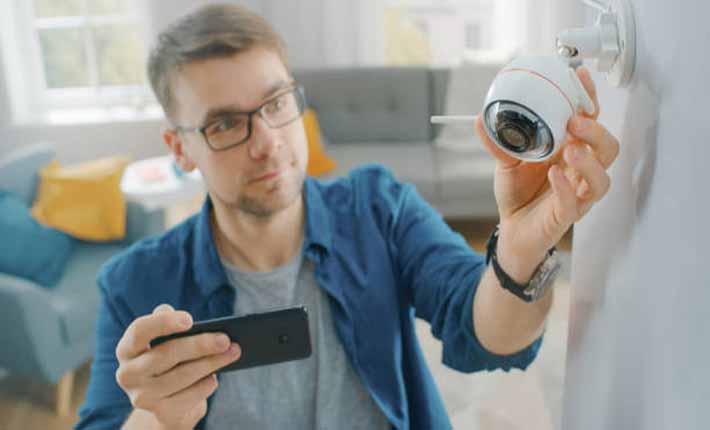Security cameras provide several advantages for businesses. First of all, they reduce crime, since unsecured buildings are easier targets for criminals. Second, cameras act as a deterrent to criminals, which makes employees more productive and engaged. Third, these cameras reduce costs, especially if businesses leverage cloud technology and reduce installation costs. And, of course, they can save money over manned security and hiring a security team. So, what are the advantages of security cameras for businesses?
Cost of Installing Security Cameras

When installing security cameras, you must consider the tools required for the process. It would be unwise to buy tools that will only be used for one camera. Instead, you should invest in a few tools that will serve the purpose for multiple cameras. There are many types of mounting brackets available for security cameras. For this reason, you need to determine the location of the camera and the spot it will be installed on. Make sure to follow the manual that came with the security camera.
Depending on the type and number of cameras, the cost of installing 4 cameras can range from $600 to $1,200. The cost depends on the type of camera you buy and the company you hire to install them. The average cost is between $500 and $1,200, although it may be more depending on your specific location. You can expect to spend at least $1,200 on the entire installation, depending on the type of security camera.
Cost of maintaining a security system
A professional home security system is often expensive, with monthly fees and equipment costs. While some systems provide great security, they suffer from false alarms caused by low batteries, faulty equipment, or human error. Some localities even charge homeowners for false alarms. There are ways to avoid these costs, however. Read on to learn about some of the most common types of home security systems and what they include. A licensed security professional will be able to recommend the right system for your home.
Security camera maintenance is important to keep the system working properly, and often includes cleaning, adjusting, and updating software. These services vary widely in cost, and the total cost depends on the number of cameras and security cameras in your home or business. The costs of maintaining a security system with security cameras can be based on the number of cameras, their types, and whether you choose a company or do it yourself, sneak a peek at this site.
Cost of monitoring footage
Security camera prices vary depending on brand and quality. You can expect to pay at least $200 for a basic camera and around $250 for a hidden camera. Prices do not include the cost of lenses, which range from $100 to $300 for a fixed variety and $1,000 for a zoom lens. DVRs can be expensive, with a single channel going for about $500, but multiple channels are necessary for larger businesses and homes with dozens of cameras.
The initial cost of a security camera system can be around $200, with monthly fees between $20 and $50. Adding monitored video has many benefits to commercial security systems. You may choose to pay between $50 and $250 a month to monitor footage, but the monthly cost of monitoring will outweigh the initial cost. Once the system is up and running, the cost will be low. In addition to being convenient, monitored video provides a wealth of advantages over traditional security systems.
Cost of storing video footage
There are two common methods of storing video footage from security cameras: local storage and cloud storage. Local storage is expensive because it requires you to purchase an on-premise recording device, while cloud storage is free and doesn’t require you to purchase hardware. However, cloud storage has its own drawbacks. It is more limited, and the costs vary considerably depending on storage capacity. Let’s explore the differences. Here are some of the pros and cons of each method.
Depending on the type of security camera used, storage can range from a few days to a few weeks. A typical video archive is 30 days, but a larger system may require more storage. Higher resolution cameras have a higher frame rate, which smooths the video. Real-time video quality is generally at 30 frames per second. However, a large system can be more expensive than a single camera.





